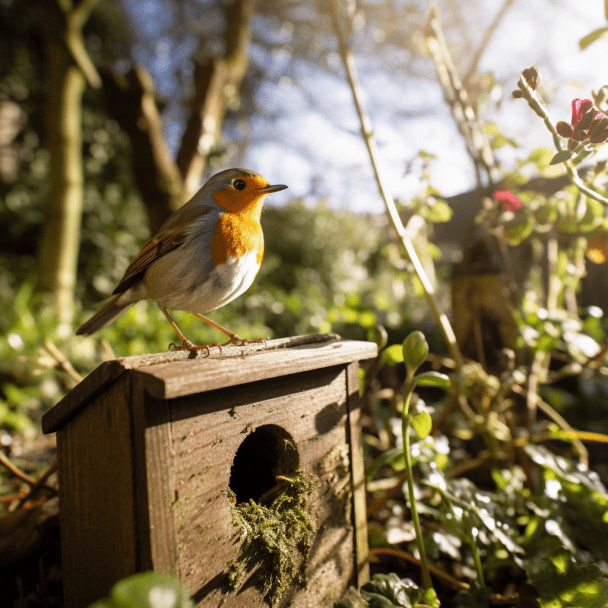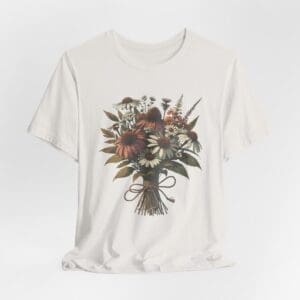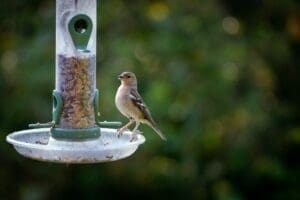Installing bird nest boxes is a rewarding way to help conserve local bird populations and encourage avian biodiversity. While the direction and height of nest box placement are key considerations, a truly successful installation requires a more holistic approach.
By thoughtfully integrating nest boxes into the surrounding habitat and environment, we can create optimal conditions to attract target species and maximise nesting success. In this post we will share some of our most useful birdhouse positioning tips.
Top Tip
Situate boxes away from high human traffic areas that can disturb nesting birds.
This post contains affiliate links which means we may make commission from any qualifying sales with no extra cost to yourself.
The North-East Advantage: Ideal Nest Box Direction

When deciding which direction to face a nest box, north-east is often regarded as the gold standard orientation. Here’s why this direction stands out for many cavity nesting birds:
Morning Sunlight for Essential Warmth
North-east facing nest boxes are perfectly positioned to capture the gentle morning sunlight. The soft, early light offers vital warmth during the cooler morning hours when many young nestlings are still developing the ability to thermoregulate. This helps mitigate the risk of chilling and supports healthy development.
Avoiding the Heat of the Afternoon
Simultaneously, north-east facing boxes largely avoid the direct afternoon sunlight. This prevents overheating during the hottest part of the day, creating comfortable temperatures for nesting birds and their hatchlings. Excessive heat can jeopardize egg and nestling survival.
Preferred by Many Cavity Nesters
This balance of gentle morning sun and afternoon shade is ideal for many common cavity nesting birds. These species intrinsically prefer the north-east direction, likely due to generations of successful nesting experiences.
Of course, depending on your location and landscape surroundings, other directions like east or straight north may offer similar benefits. The key is finding the ‘sweet spot’ that captures sufficient warmth while avoiding overheating.
Balancing Height for Safety and Accessibility


When installing nest boxes, most experts recommend a height range of 5 to 15 feet. But what’s behind this guidance, and how can we fine-tune height for different species?
General Height Guidelines
Predator Protection
Mounting nest boxes at least 5 feet high helps safeguard birds and eggs from ground-based predators like cats, foxes, and raccoons. 15 feet is typically sufficient to deter most climbing mammals.
Accessibility for Monitoring
The suggested 5 to 15 feet height range also balances easy monitoring and maintenance with protecting nesting birds. Place too low, and birds may abandon the box. Too high, and monitoring becomes dangerous or impossible.
Customizing Height for Different Species
Ground Nesting Species
Birds that traditionally nest low to the ground, like sparrows and robins, generally prefer nest boxes placed lower – around 3 to 4 feet high. They feel more secure closer to the ground.
Tree Canopy Nesters
Species that nest high up in tree canopies, such as chickadees, titmice, and bluebirds, tend to favour nest box heights on the upper end of the range. They naturally look for cavities 6 to 15 feet up in mature trees.
Additional Birdhouse Positioning Tips


While direction and height play a major role, truly integrating nest boxes into the surrounding habitat requires a more comprehensive placement strategy:
Match the Habitat
Choose or modify the nest box to match the local environment. Wooden boxes generally blend into natural areas, while plastic and metal boxes work well in urban settings. Painting boxes to match foliage camouflages them.
Distance from Human Activity
Position nest boxes away from high traffic areas around your home. This prevents disturbances and makes anxious parents more likely to occupy the box long-term.
Deter Predators
Employ predator guards like baffles below the box or a metal collar around the mounting pole. This prevents climbers like cats from raiding eggs and young.
Consider Wind Conditions
Mount the nest box stably so adults and nestlings aren’t buffeted by wind. Screw boxes into wooden posts or living trees for security. Flexible mounting poles can also absorb wind impact.
Proximity to Water
Locate nest boxes for waterfowl like Wood Ducks or mergansers reasonably close to water sources. They must walk hatchlings overland to water after jumping down.
Mind Microclimates
Your property likely has unique microclimates due to structures and vegetation. Nest boxes out of the wind and sun often see higher success.
Observe conditions over time rather than relying on one-off readings. Note sun exposure, shade, and wind dynamics across days and seasons.
Final thoughts - Birdhouse Positioning Tips


While direction and height offer useful starting points, truly strategic placement requires embracing multiple factors that collectively create an optimal nesting environment. Careful attention to sun exposure, temperature regulation, predation risks, human disturbance, and the unique context of your property allows you to match boxes with your target species’ needs.
Seeing your thoughtfully placed nest boxes occupied, season after season, offers immense satisfaction. Use this opportunity to monitor and learn about the birds relying on your habitat. Share your knowledge to inspire others in conserving native birds.
When it comes to nurturing avian biodiversity, every nest box placement matters!
Frequently Asked Questions
Q: What maintenance is required for nest boxes?
A: Annual maintenance ensures nesting success: clean out old nesting material after each season, make any repairs, re-treat/re-paint if needed, and secure loose/damaged predator guards.
Q: How many nest boxes can I place per acre?
A: As a general guideline, start with 5-10 nest boxes per acre of suitable habitat, spaced at least 25-50 feet apart. Monitor occupation and gradually add more if needed.
Q: How do I monitor nest boxes responsibly?
A: Use a nest box camera or parabolic mirror to see inside. Only open to check briefly if unoccupied. Never disturb nests once eggs are laid or young are present.
Q: When should I take down nest boxes?
A: Only remove nest boxes after the nesting season ends, typically after late summer/early fall fledging. Leave in place over winter for roosting birds seeking shelter.







